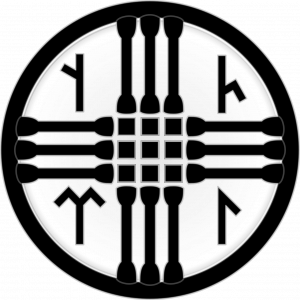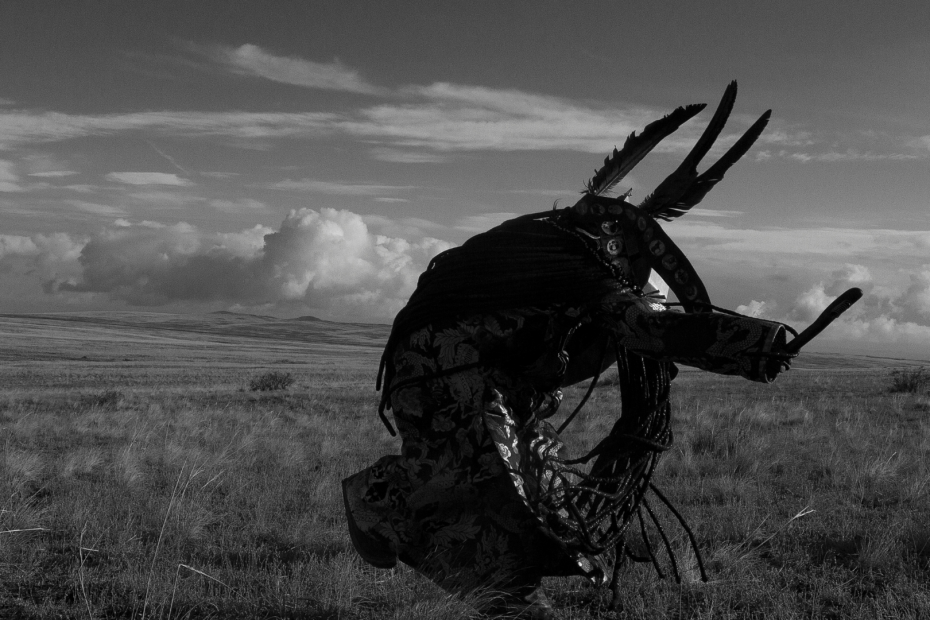Tengrism is a fascinating and ancient religion that originated in Central Asia. It is characterized by its unique blend of shamanism, animism, totemism, polytheism, and monotheism, as well as its strong emphasis on ancestor worship. Tengrism was the prevailing religion of various nomadic tribes and empires in Central Asia, including the Turks, Mongols, Hungarians, Bulgars, Xiongnu, and even the Huns. In this article, we will delve into the rich history and beliefs of Tengrism, exploring its relationship with shamanism and its role in the cultures of the region.
Origins and Spread of Tengrism
Tengrism has its roots in the ancient Turkic and Mongol cultures of Central Asia. It is believed to have emerged as a spiritual practice among the nomadic tribes that roamed the steppes of Eurasia. The word “Tengrism” is relatively new, and it is commonly used to describe the Tengri-centered shamanism that prevailed among these early Turkic and Mongol tribes.
The religion of Tengrism spread and evolved alongside the rise and fall of various empires and khanates in the region. It was practised by the Gokturk Khaganate, Western Turkic Khaganate, Old Great Bulgaria, Danube Bulgaria, Volga Bulgaria, the Huns and Eastern Tourkia (Khazaria). Tengrism played a significant role in shaping the social and cultural fabric of these societies.

Spelling of 𐱅𐰭𐰼𐰃 tengri in Old Turkic script.
Tengrism and Shamanism
Tengrism is closely intertwined with shamanism, which is a spiritual practice involving the use of spiritual trance to facilitate journeys to non-ordinary realities. Shamanism is a common theme in various tribal cultures worldwide, including those that practised Tengrism.
In Tengrism, shamans play a crucial role as intermediaries between the human world and the spirit world. They possess the ability to communicate with spirits, ancestors, and deities, and they use this connection to solve problems, provide healing, and guide their communities. The shamanic trance is a central aspect of Tengrism, as it allows shamans to access the non-ordinary reality where they perform their spiritual work.
The Beliefs of Tengrism
Tengri, the Supreme Sky God
At the heart of Tengrism is the belief in Tengri, the supreme sky god. Tengri is often associated with the colour blue and represents the eternal blue sky that covers the world. This sky god is considered the ruler of all spirits and deities and is revered as the creator and sustainer of the universe. The worship of Tengri is a fundamental aspect of Tengrism, and prayers and rituals are dedicated to this divine entity. The creation of the world is often depicted as a process of emergence from the cosmic egg or primal waters. Tengri’s presence and power led to the formation of the sky, earth, and all living beings.

A symbol used by Tengrists, representing the structure of the universe, the god Tengri, the roof opening of a yurt, and a shaman’s drum.
Creation Myth
In one myth, Tengri is a pure, white goose that flies over an endless expanse of water, which represents time. Beneath this water, Ak Ana (“White Mother”) calls out to him saying “Create”. To overcome his loneliness, Tengri creates Er Kishi and together they bring into being the world. The myth goes, that they soared above the primal abyss until Kishi’s hubris drove him to attempt to surpass Tengri’s heights. Kishi’s arrogance led to his fall into the sea, prompting his plea for Tengri’s rescue. Responding, Tengri shaped a primal mound from the sea’s elements, birthing the Cosmic Tree – the revered tree of life. From its branches emerged people and other lesser deities.
Tengri guarded against malevolent forces with the aid of dogs and snakes, while coexisting harmoniously with Yer, the Earth spirit. Some narratives even depict Tengri and Yer as wedded partners, their union culminating in humanity’s creation. Yer endowed humans with physical bodies, while Tengri bestowed souls at birth, retrieving them upon death.
In the diverse tapestry of Tengrism across time, variations emerge among practitioners. For instance, Mongolian Tengriists honour 99 deities, while Turkish adherents recognize 17. Commonly, Tengrism’s pantheon includes Tengri and sub-deities like Yer, Umai, Erlik, elements such as Water, Fire, Sun, Moon, and atmospheric phenomena like Clouds, Wind, Storm, Thunder and Lightning, Rain, and Rainbows. Adherents believe that showing reverence to these deities fosters prosperity and well-being.
Erlik is the God of the Underworld from where he brings forth death, plague and evil spirits to torment humans. In the myths of the Turkic and Mongolian peoples, Erlik was involved in the creation of humanity but his pride led to friction and consequently, he was banished to the underworld.
Zümrüdüanka is the bird that teaches fire in Turkish mythology. After Tengri had created the world and its inhabitants, he withdrew to his throne in heaven. Abundance embraced the world but people had a big problem. Cold… birds had feathers, wild animals had thick skins and fur whereas people were naked. They could not be protected from the cold like the animals. This situation pushed them on a quest. They needed something bright and warm like the sun. This was fire.
The story goes that humans tried to reach the fire by climbing a tall tree where they were greeted by the birds to who they told their woes to. The birds took pity on the humans and promised to help. They flew in all directions in search of a solution, but nothing.
“Let’s go to the great beech they said. Such a sacred bird lives in the branches of the sacred tree.”
So the birds crossed the mountains with the humans not far behind and reached the great beech, the pillar of the world, where a Phoenix dwelt – Zümrüdüanka. They respectfully greeted him and expressed their wishes, in return, Zümrüdüanka taught humans how to hit stones together to create sparks. After that day, humans were no longer afraid of the cold.
The core tenets of Tengrism encompass:
- Tengri as the supreme deity possesses omniscience and judges deeds, both virtuous and wicked, while being inherently unpredictable.
- Tengri is the driving force behind nature’s workings, asserting dominion over all natural phenomena.
- The diverse spirits within Tengriism, spanning celestial, subterranean, and earthly realms, can exert benevolent or malevolent influence.
- A plurality of religions is acknowledged; Tengri’s judgment hinges on individual righteousness, irrespective of religious affiliation.
- Embracing human fallibility, Tengrism advocates tolerance for imperfections, divergent beliefs, and varying faiths, upholding the imperfection of humanity.
Tengrism cast a significant imprint on historical empires such as the Gok-Turk Empire and the Great Mongol Empire. Notably, figures like Genghis Khan and his followers adhered to Tengrism, while the belief system’s ethos upheld religious tolerance. Unlike many religions, Tengriism never sought dominance but rather nurtured a landscape of coexistence.

Temdeg symbol used by worshippers of Tengri.
World View
In Tengrism, as in many other belief systems, the concept of multiple worlds or realms can vary based on different interpretations and cultural contexts. Some Tengrist traditions do incorporate the idea of multiple worlds, each with its own characteristics and significance. However, the specifics and number of these worlds can differ among different Central Asian and Turkic cultures that practice Tengrism.
One common conception found in some Tengrist traditions is the belief in three worlds:
- Upper World: This is often associated with the realm of Tengri, the supreme sky deity. It is the highest and most sacred realm, representing the divine and the heavens.
- Middle World: This corresponds to the earthly realm where humans and other living beings reside. It is the world of everyday existence and interactions.
- Lower World: This is often associated with the realm of spirits and ancestors. It is a realm beneath the earth and is closely connected to shamanic practices and communication with the spirit world.
Ak Ana
Ak Ana, which means “White Mother” in Turkic languages, is a significant figure in Tengrism and Turkic mythology. She is often considered a mother goddess, a powerful spirit, and a protector of the Turkic people. The concept of Ak Ana varies among different Turkic cultures and Tengrist traditions, but there are common themes associated with her:
- Mother Goddess: Ak Ana is often revered as a maternal figure and a symbol of fertility, protection, and guidance. She is believed to watch over and care for the Turkic people, offering them blessings and support.
- Protector of the Land: Ak Ana is associated with the land, nature, and the well-being of the community. She is believed to ensure the harmony and balance of the natural world, as well as the prosperity and safety of the people who inhabit it.
- Ancestral Connection: Ak Ana is sometimes seen as a link to ancestral spirits and the spirit world. Her role extends to mediating between humans and the divine, and she is often invoked in rituals and prayers for blessings and assistance.
- Shamanic Influence: Ak Ana’s symbolism and significance are closely tied to shamanic practices and beliefs. Shamans may invoke her during their rituals and seek her guidance in their spiritual work.
- Cultural Identity: Ak Ana is an important cultural and spiritual symbol for many Turkic peoples. She represents a connection to ancient traditions, beliefs, and values that have been passed down through generations.
Other Deities
- Umay: Umay is a goddess associated with fertility, motherhood, and protection. She is often regarded as the Earth Mother and is venerated for her role in ensuring the well-being of the land and its people.
- Erlik: Erlik is a deity associated with the underworld, death, and the spirit realm. He is often depicted as a ruler of the underworld and is a figure to whom shamans might communicate during their rituals.
- Yer-Sub: Yer-Sub is a deity associated with the earth and land. It is believed that Yer-Sub plays a role in the protection and nourishment of the earth and its inhabitants.
- Tengri Tagh: Tengri Tagh, often referred to as the “Lord of the Mountain,” is a deity associated with mountains and high places. It is believed that Tengri Tagh holds a special position in the spiritual realm.
- Kok Tengri and Kara Tengri: These are spirits or deities associated with the celestial realms. Kok Tengri represents the Blue Sky or the bright daytime sky, while Kara Tengri represents the Dark Sky or the night sky.
- Spirit Beings: In addition to specific deities, Tengrism often involves the veneration of spirits inhabiting natural elements such as mountains, rivers, trees, and animals. These spirits are seen as intermediaries between the human and spirit worlds.
It’s important to emphasise that Tengrism is not a monolithic belief system, and the specific deities and spirits venerated can vary widely among different cultures and regions.
Tengrist View on Human Souls
Throughout various cultures, the concept of multiple souls residing within both humans and animals has been explored. While the specifics of these souls may vary among different tribes and traditions, a prevalent notion suggests that humans possess three souls. It’s worth noting that certain tribes, like the Samoyets of northern Siberia, have distinct beliefs, attributing four souls to women and five to men. This interconnectedness extends to animals, underscoring the importance of showing respect to all living beings.
Categories of the Soul
In their extensive research spanning North America, North Asia, and Central Asia, scholars Paulsen and Jultkratz identified two core souls that appear to be universal:
- Nefes (also known as Nafs) – This represents the breath, the life force, and the bodily spirit.
- Shadow Soul / Free Soul – This ethereal entity holds a significant place in the belief system.
Furthermore, Jean-Paul Roux brings attention to the “Özkonuk” spirit mentioned in ancient Buddhist writings of the Uighurs.
Insights from Research
Julie Stewart, who dedicated her life to studying Mongolia, shared her understanding of the soul in one of her articles:
- Amin Ruhu: This soul facilitates breathing and maintains body temperature. It is the animating force that invigorates a person. (The Turkish equivalent is Özüt.)
- Sünesün Ruhu: Operating outside the body, this soul navigates through water. It plays a role in reincarnation, moving to a world tree after a person’s passing. Upon rebirth, it emerges from a source and enters a newborn. (Also referred to as Süne Ruhu among the Turks.)
- Sülde Ruhu: This soul shapes an individual’s personality. While the departure of other souls from the body results in a loss of consciousness, the exit of this soul leads to the person’s demise. Following death, this soul becomes one with nature and does not experience rebirth.
Animism and Totemism
Animism and totemism are integral parts of Tengrism. Animism is the belief that all natural objects, such as animals, plants, rivers, and mountains, possess a spiritual essence or soul. These spirits are seen as powerful entities that can influence human lives and should be respected and honoured.
Totemism, on the other hand, involves the belief in a sacred connection between humans and specific animals or natural objects. These totems serve as protective spirits or guides for individuals or clans, and they are often represented by symbols or physical representations.
Ancestor Worship
Ancestor worship is a significant component of Tengrism. Ancestors are regarded as wise and powerful beings who can offer guidance, protection, and blessings to their living descendants. Tengrists believe that by honouring and remembering their ancestors through rituals and offerings, they can maintain a strong connection with the past and receive the blessings and support of their forefathers.
Tengrism and Central Asian Cultures
Throughout history, Tengrism has played a vital role in shaping the cultures and societies of Central Asia. It was the dominant religion among various nomadic tribes and empires, influencing their beliefs, customs, and social structures. The Turks and Mongols were among the most significant groups that practised Tengrism. It served as a unifying force, bringing together diverse tribes under a common spiritual framework. The Turks and Mongols believed in the power of Tengri to guide and protect their communities, and they sought the guidance of shamans to ensure the prosperity and well-being of their people.
Impact on Central Asian Shamanism
Tengrism had a profound influence on the development of shamanism in Central Asia. The combination of Tengrism and shamanism created a unique spiritual landscape where the shamanic trance and spiritual journeys were deeply intertwined with the worship of Tengri and the reverence for spirits and ancestors. This fusion of beliefs and practices shaped the rituals, ceremonies, and worldview of Central Asian shamans.
The Revival of Tengrism
In recent decades, there has been a revival of interest in Tengrism among the Turkic nations of Central Asia. The dissolution of the Soviet Union in the 1990s paved the way for a renewed exploration of traditional cultural practices and beliefs. Tengrism has been advocated in intellectual circles in regions such as Tatarstan, Buryatia, Kyrgyzstan, and Kazakhstan, where efforts are being made to preserve and revive Tengrist traditions.
The revival of Tengrism is particularly prominent in regions such as Sakha, Khakassia, Tuva, and Altay, where indigenous Turkic communities have embraced their ancestral beliefs and rituals. These communities are actively working to reclaim their cultural heritage and ensure the survival of Tengrism in the modern world.
Tengrism and Modern Interpretations
In modern-day Mongolia, Tengrism has evolved and merged with other spiritual practices, particularly Tibetan Buddhism. This synthesis has created a unique blend of beliefs and rituals that incorporate elements of both Tengrism and Buddhism. Tengrism is still practised in its purer forms around Lake Khovsgol and Lake Baikal, where communities strive to maintain ancient traditions and connection with the spiritual realm.
In Turkey, Tengrism is known as the “Goktanrı dini,” which translates to the “Sky God religion.” The Turkish people draw parallels between the Mongolian word “Tengri” and the Turkish words for sky and God. While Tengrism has been supplanted by Islam among the majority of Turkic peoples, there is still a recognition and appreciation for the ancient beliefs and cultural heritage associated with Tengrism.
However, Tatar Tengrists express opposition to Islam, viewing it as a foreign Semitic religion imposed upon the Turks. They argue that Islam’s teachings exclude the experiences of other nations, presenting Semitic history as if it were the universal history of humanity. One of their main criticisms is the principle of submission found in both Islam and Christianity, which they see as a significant flaw. This submission, they believe, enables the exploitation of ordinary people by the wealthy and hinders overall human progress.
Instead, Tatar Tengrists advocate for Turanism – a movement that brings together people who speak Turkic languages or have similar cultures. It emphasises shared linguistic, historical, and cultural ties among these groups, which span across a wide geographical area, including regions in Central Asia, the Caucasus, Eastern Europe, and parts of Siberia. The Tartas also support the abandonment of Islam as an Arab religion. They propose embracing a different spiritual path that aligns more closely with Turkic heritage.
Conversely, there are those who counter this perspective. They contend that Tengri, the supreme god in Tengrism, is essentially synonymous with Allah. According to this viewpoint, Turkic ancestors did not entirely discard their former beliefs but rather integrated the concept of Allah as a new manifestation of Tengri.
The Significance of Tengrism
Tengrism offers valuable insights into the spiritual and cultural heritage of Central Asia. It represents a unique blend of shamanism, animism, totemism, and monotheism that shaped the lives and beliefs of nomadic tribes and empires in the region. Tengrism emphasises the connection between humans and the natural world, and the importance of maintaining harmony and balance with the spirits and forces that govern the universe.
The revival of Tengrism among various Turkic communities demonstrates the enduring appeal and relevance of these ancient beliefs in the modern world. Tengrism serves as a reminder of the rich cultural diversity and spiritual practices that have shaped human history, and it offers valuable lessons on the importance of preserving and honouring our ancestral traditions.
Conclusion
Tengrism is a remarkable and ancient religion that has left a lasting impact on the cultures and societies of Central Asia. Tengrism’s emphasis on the worship of Tengri, the connection with spirits and ancestors, and the role of shamans as intermediaries between worlds all contribute to its rich tapestry of beliefs.
The revival of Tengrism among Turkic communities reflects a growing appreciation for the cultural heritage and spiritual traditions of Central Asia. As we continue to explore and understand Tengrism, we gain a deeper appreciation for the diversity and complexity of human spirituality throughout history. Tengrism serves as a reminder of the profound connections between humans, nature, and the spiritual realm, and the importance of preserving and honouring our ancestral traditions.
So let us embrace the wisdom of Tengrism, and may it inspire us to seek harmony and balance in our lives, as we navigate the intricate tapestry of the universe.
